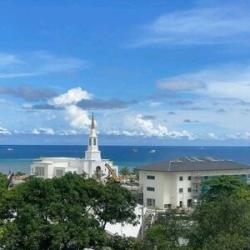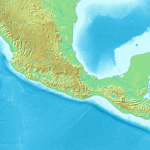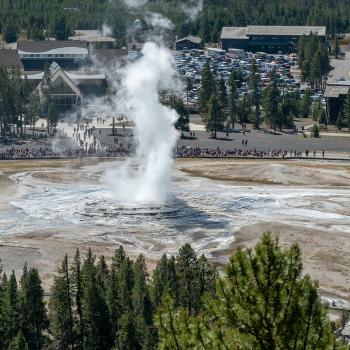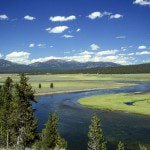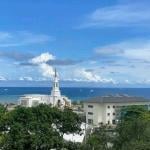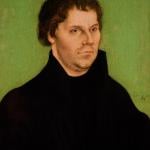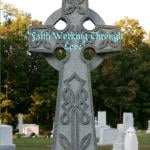
***
This article appeared earlier today (Monday) in Interpreter: A Journal of Latter-day Saint Faith and Scholarship:
Lisle G. Brown, “Tamid: Zacharias and the Second Temple”
Abstract: This essay follows Zacharias’ biography from entering the priesthood till the day the angel Gabriel appeared to him in Herod’s temple. After recounting the procedures to become a priest, Brown focuses on the day when Zacharias prepared to bring one of the two central standing offerings. He points out that likely, a priest would only have a once in a lifetime chance to partake in the core of this ceremony, entering the Holy Room and burning incense on the Inner Altar. Brown paints a very visual picture of this day, immersing us in the ritual of the time, a ritual that became even more significant for Zacharias by seeing an angel in the temple, something that has not happened before nor after in the Second Temple.
[Editor’s Note: Part of our book chapter reprint series, this article is reprinted here as a service to the LDS community. Original pagination and page numbers have necessarily changed, otherwise the reprint has the same content as the original.
See Lisle G. Brown, “Tamid: Zacharias and the Second Temple,” in Temple Insights: Proceedings of the Interpreter Matthew B. Brown Memorial Conference, “The Temple on Mount Zion,” 22 September 2012, ed. William J. Hamblin and David Rolph Seely (Orem, UT: The Interpreter Foundation; Salt Lake City: Eborn Books, 2014), 241–78. Further information at https://interpreterfoundation.org/books/temple-insights/.]
***
And here are a couple of links to articles from a previous volume of Interpreter:
Abstract: Nephi1 represents the sacred record that becomes the Book of Mormon as a new brass serpent to heal the nations. Nephi’s typological project is reasonable given that he self-identifies with Moses, his family’s scriptures and compass are made of brass, and he consistently describes reading as an act of seeing, looking, or believing. Nephi understands from Isaiah that the book he (Nephi) prepares — and that he has so much to say about — will become an ensign, or sign, that will be lifted up and heal the nations that have stumbled in blindness. Nephi’s project emerges most fully in 2 Nephi 25, the introductory material to an extended prophecy wherein he points the Jewish people to their Messiah, a figure he equates with Moses’s raised serpent and Jesus Christ.
Barbara Morgan Gardner, “Women and the Priesthood in the Contemporary Church”
Abstract: During the last century there has been a prophetic emphasis on the understanding of women and their priesthood power and authority that has been unprecedented since the days of Joseph Smith. Through the use of scripture and teachings of our prophets and leaders of the restoration, this paper seeks to clarify the contemporary role of women in relation to their priesthood power and authority. By integrating the patriarchal priesthood—that priesthood entered into by Eve and Adam, lost during the time of Moses, and again revealed in our day in the Kirtland Temple—with the administrative priesthood found in the public Church and spoken of more traditionally, we can better understand the privileges, powers, and authorities associated with the temple that are critical for our day.
[Editor’s Note: Part of our book chapter reprint series, this article is reprinted here as a service to the LDS community. Original pagination and page numbers have necessarily changed, otherwise the reprint has the same content as the original.
See Barbara Morgan Gardner, “Women and the Priesthood in the Contemporary Church,” in Proceedings of the Fifth Interpreter Foundation Matthew B. Brown Memorial Conference, 7 November 2020, ed. Stephen D. Ricks and Jeffrey M. Bradshaw, Temple on Mount Zion 6 (Orem, UT: The Interpreter Foundation; Salt Lake City: Eborn Books, 2021), in preparation. Further information at https://interpreterfoundation.org/books/the-temple-past-present-and-future/.]
***
This article in the Deseret News caught my attention, and has since caught the attention of others, as well:
Amen. And again, amen.
***
This was never intended as a San Francisco trip. San Francisco was just a place to spend a night while traveling along our way; it and the Bay Area are well worth a trip of their own.) So we didn’t look around in the city, let alone cross the Oakland Bay Bridge to revisit the Oakland California Temple (one of my favorites) or the vicinity of the University of California at Berkeley and the Graduate Theological Union (where I spent a very enjoyable summer back in, I think, 1990.) Instead, we got up this morning and headed on our way without seeing much of San Francisco. It was sorely tempting to devote some time to Stanford, too, where I spent two remarkable weeks at the Hoover Institution on War, Revolution, and Peace just before beginning my undergraduate studies at BYU. But we needed to get on the road. However, once we were down the road just a bit, we did take the time to shop at a familiar roadside produce stand, enjoy a good fish and shrimp lunch at Sea Harvest in Moss Landing (and, from the restaurant, to watch an amusing sea otter cavorting in Elkhorn Slough), and then to slowly do the famous 17-Mile Drive in Monterey. And then we drove southward, eventually stopping in Buellton for a light dinner and in Solvang for the night. Among my childhood memories are at least two or three trips up to the little Danish-American town of Solvang and enjoying split-pea soup — of all things — at Pea Soup Andersen’s (note the Danish name) in nearby Buellton. My paternal grandfather, after all, was Danish.
***
But I’m afraid that I’m obliged to end this blog entry on a note of blood-curdling horror, with a chilling item from the Christopher Hitchens Memorial “How Religion Poisons Everything” File©:
“Prime minister thanks LDS Charities for aid to displaced families sheltered in Kurdistan Region”
Posted from Solvang, California



